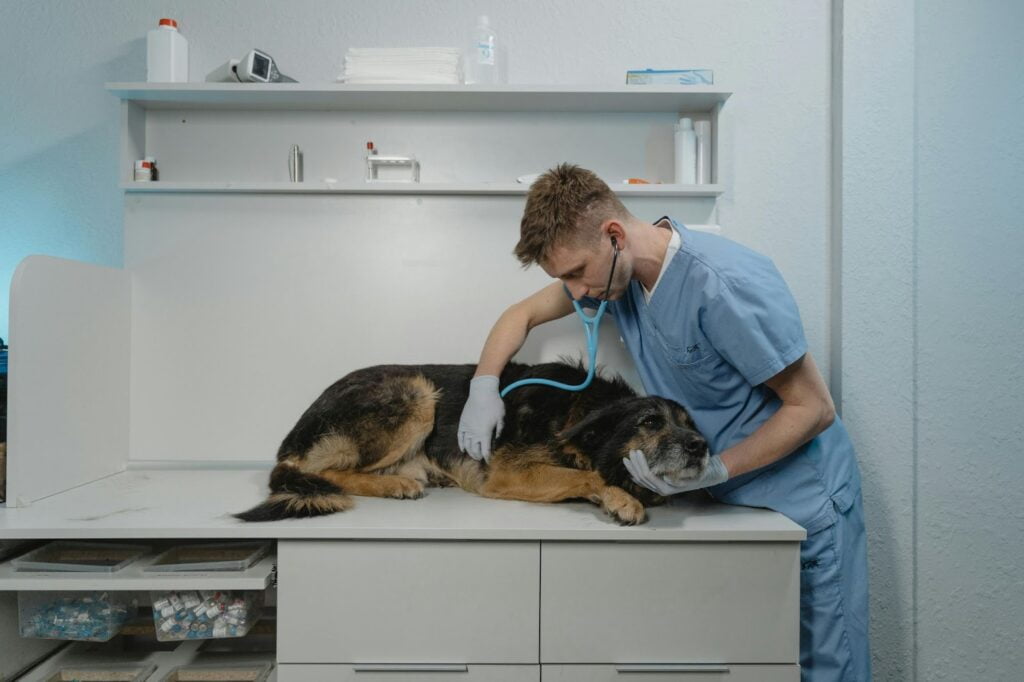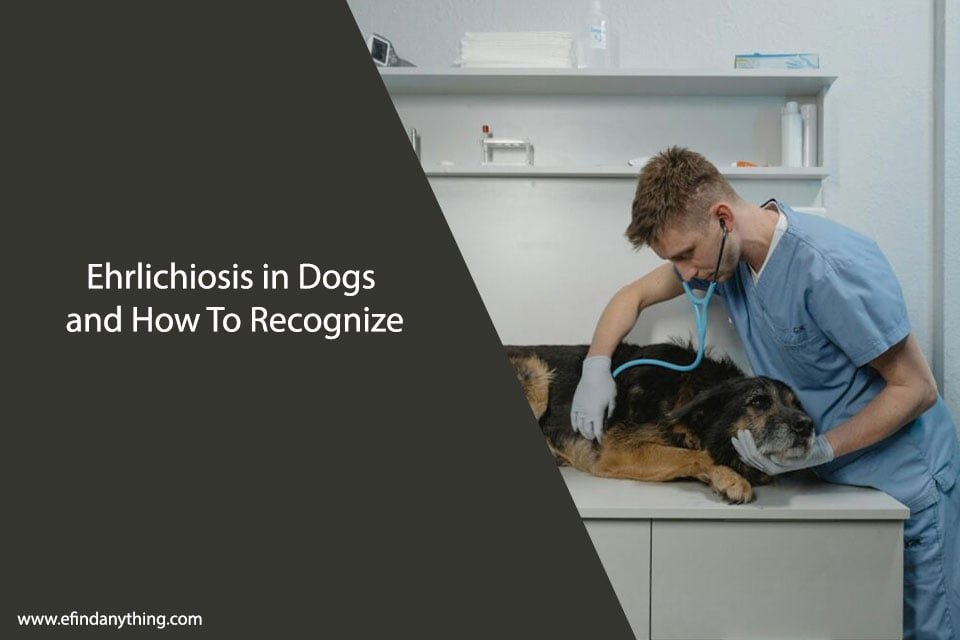During the warmer months, one of the biggest joys of owning a dog is being able to bring them outside. Fresh air, sunshine, and a dog by your side – what could be more perfect? But the outdoors does bring some dangers. Your dog could slip their collar, potentially meet aggressive dogs, or hurt themselves on trash or other hazards.
As responsible pet owners, we can take steps to mitigate these issues – but even after an uneventful trip outside, your dog could be carrying home a potential problem on its fur. Ticks are now active all throughout the year, and a bite from just one of these parasites can cause serious health issues.
Ehrlichiosis is a significant and potentially debilitating illness that may affect your dog after they suffer a tick bite. Identifying this tick-borne disease can be challenging, but early detection is key toward getting your dog the proper treatment. Today, we’ll familiarise you with ehrlichiosis in dogs, its symptoms, and how to tell if your dog has it.
Table of Contents
What is Ehrlichiosis?
Ehrlichiosis in dogs is a disease caused by one species of a tiny microorganism known as Ehrlichia. These bacteria affect white blood cells and can lead to numerous health complications if not treated speedily.
The most common type of these bacteria is the ‘Ehrlichia canis’, transmitted through the bite of the brown dog tick (Rhipicephalus sanguineus). This particular tick species prefers a warm climate, which explains why ehrlichiosis is more widespread in certain areas.

Symptoms of Ehrlichiosis
Identifying ehrlichiosis early in your pet can be difficult because symptoms often don’t appear until 1 to 3 weeks after being bitten by an infected tick. Moreover, these symptoms are often very general and could be mistaken for various other illnesses without appropriate testing.
In the initial acute phase, signs may include:
- Fever
- Loss of appetite
- Lethargy
- Swollen lymph nodes
- Weight loss
- Nasal or eye discharge
- Difficulty breathing
- Abnormal bleeding such as nosebleeds or bruises on the gums or belly
If left untreated at this stage, the disease advances into the subclinical phase. Untreated ehrlichiosis can last years without significant outward symptoms, but will eventually develop into clinical ehrlichiosis or chronic ehrlichiosis.
A dog with clinical ehrlichiosis may develop anaemia (low red blood cell count), low platelet count (cells responsible for blood clotting), or low white blood cell count (cells that fight infections).
Other severe manifestations include neurological abnormalities like depression and coordination problems along with eye abnormalities, including blindness.
How To Tell If Your Dog Has Ehrlichiosis
Vigilant pet parents observing these symptoms in their dogs should take their pets to a vet immediately. The veterinarian will conduct a thorough examination and may carry out certain tests like blood tests, urinalysis, and imaging tests if necessary.
A test called PCR (Polymerase Chain Reaction) is very helpful in detecting the disease as it amplifies the DNA of the bacteria, making them easier to identify. Also, a test called IFA (Indirect Fluorescent Antibody) reveals if your dog has been exposed at any time to Ehrlichia bacteria by detecting antibodies.
Preventive Measures and Treatment
Preventing Ehrlichiosis
Preventing ticks from infesting your dog in the first place is the best means to avert ehrlichiosis. There are several preventative measures you can take:
1. Tick Control Products
Using tick prevention products is paramount. These come in various forms like oral tablets, spot-on treatments, and collars impregnated with anti-tick agents. Your veterinarian can advise you on the best product suitable for your pet, considering factors such as its age, breed, overall health status, and the environment.
2. Regular Inspection
Regularly inspect your dog for ticks after spending time outdoors, especially in wooded or grassy areas where ticks thrive. Search thoroughly under their ears, between toes, and around their neck and tail since ticks tend to hide in these areas. Certain dog breeds like German Shepherds and Siberian Huskies tend to experience more serious symptoms and should thus be observed carefully.
3. Environmental Control
Keeping your yard clean can discourage tick breeding. Regularly mow the lawn and clear out piles of leaves or debris that provide hiding places for ticks.
4. Vaccination
While no viable vaccine exists currently for ehrlichiosis itself, vaccines against Lyme disease (another tick-borne disease) might provide partial cross-protection against ehrlichiosis.
5. Avoid Tick Habitats
Limiting your dog’s exposure to areas where ticks are plentiful, particularly during peak tick season (spring and fall), will reduce the risk of them contracting the disease.
Treatment for Ehrlichiosis
If preventive measures fail and your dog contracts ehrlichiosis, immediate treatment should be sought to give your pet the highest chance of a complete recovery.
1. Antibiotics: The primary course of treatment for ehrlichiosis usually involves administering a long-term course of antibiotics, typically doxycycline or tetracycline. Response to therapy is generally rapid with improvement noted within 24-48 hours after starting treatment.
2. Steroids & Blood Transfusions: In severe cases presenting complications like anaemia, your veterinarian may recommend additional treatments such as blood transfusions or medications like steroids to combat the inflammation and control immunological reactions.
3. Follow-Up Care: Even after symptoms have subsided, it’s essential to schedule regular follow-up appointments for monitoring progression and ensuring the disease has been completely eliminated. The vet may recommend blood tests at specific intervals to make sure that the infection is gone.
Timing is key in treating ehrlichiosis effectively. Prolonged infection can lead to severe and long-term health problems for pets; hence, it’s crucial not to ignore any suspicious symptoms and seek early veterinary attention.
Remember: do not administer any medication to your pet without first consulting with your veterinarian, and always follow their instructions for the dosage and timing of the medication.
Conclusion
While being a serious concern for pet parents, ehrlichiosis is treatable if detected early. Awareness about this disease along with vigilance for symptoms and regular vet check-ups are crucial in managing this illness effectively.
Always remember that the best form of treatment is prevention – prioritise effective tick control measures to safeguard your dog and keep your outdoor adventures happy and stress-free.





